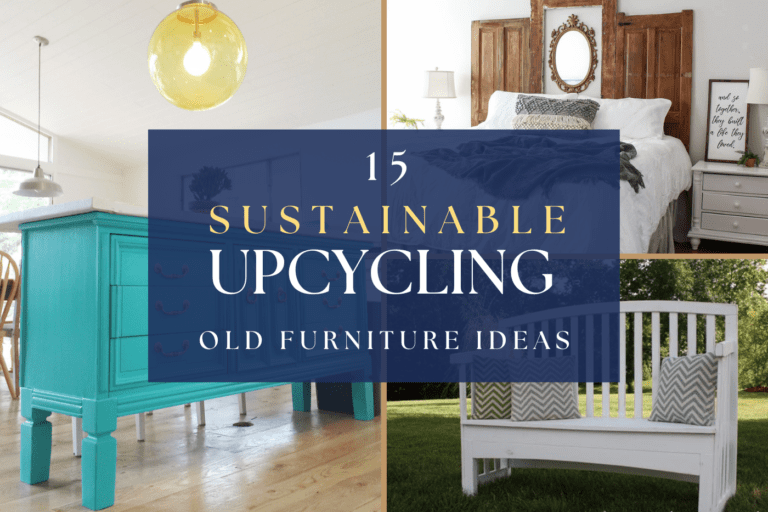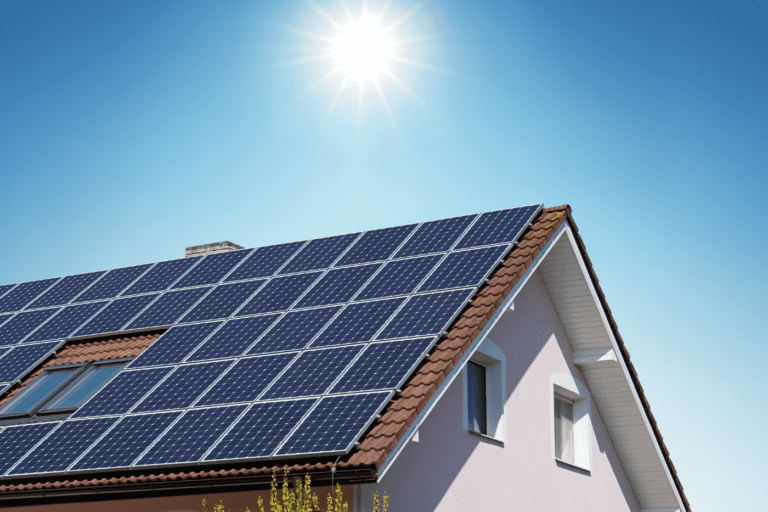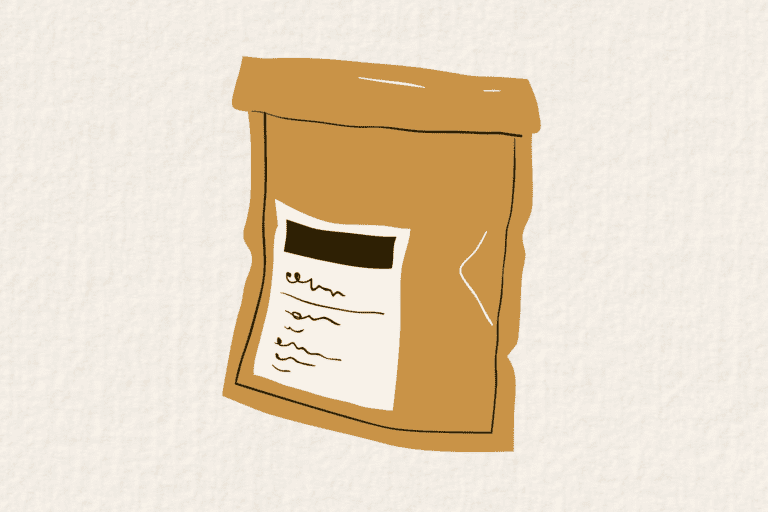Have you ever thought about living in a way that’s kinder to the planet and everyone on it? That’s what sustainable living is all about. But hey, we get it—it can sound like a big commitment and you might wonder, “Where do I even begin?“
No worries! Sustainable living is simply making choices that are good for the Earth and us. It’s not about being perfect, but about doing what we can, little by little, to create a better world.
In this guide, we’re breaking down sustainable living into five everyday examples that are easy to grasp. So, whether you’re just starting, figuring out how to fit it into your daily life, or just seeking some easy tips, we’ve got your back. 🌱✨
What Does Sustainable Living Mean?
At its core, sustainable living is about making choices that allow us to meet our needs without compromising the ability of future generations to meet their own needs. It’s like being the ultimate superhero for the planet and its inhabitants! Here’s how it plays out in our lives:
- Conscious Consumption:
- Buying things mindfully, considering their environmental and social impact before making a purchase.
- Efficient Resource Use:
- Using resources like energy, water, and materials efficiently to reduce waste and lower our carbon footprint.
- Environmental Respect:
- Taking actions that show love for our beautiful Earth. Things like reducing pollution and protecting wildlife and natural habitats.
- Social Responsibility:
- Supporting fair labor practices, respecting human rights, and promoting equality and justice within and beyond our communities.
Why Is Sustainable Living Important?
Now, you might be wondering, “Why should I bother with all this? How does it affect me and the world around me?” Great questions! Here’s why sustainable living is a big deal and totally worth your attention:
- Preserving our Planet:
- It’s like giving a long, warm hug to Mother Earth! Sustainable living helps protect our environment, ensuring it remains beautiful and habitable for generations to come.
- Health and Well-being:
- By choosing cleaner, eco-friendly alternatives, we improve our health and well-being. Less exposure to harmful chemicals and more time in green spaces—talk about a win-win!
- Future-Proofing Our Resources:
- Imagine leaving a well-stocked pantry for our grandkids! Sustainable living ensures we use resources wisely so there’s enough to go around in the future.
- Global Impact:
- Every small step we take towards sustainable living adds up globally. It’s like joining a massive team, working together to create a better, brighter world.
So, are you ready to become a sustainability champion? 🌟 Let’s embark on this rewarding journey of sustainable living, making the world a happier and healthier place, one thoughtful choice at a time! 🌱
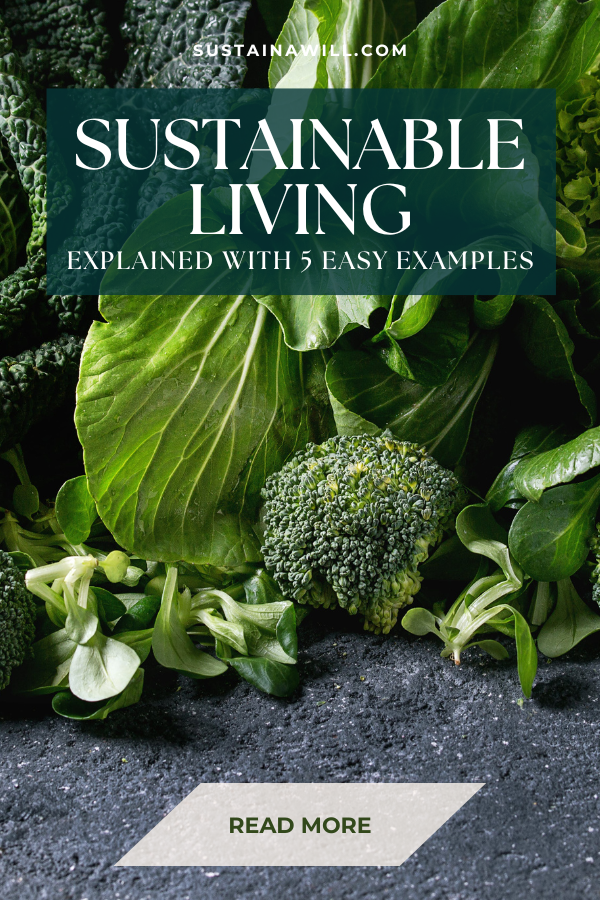
1. Reducing Waste in Everyday Life
Read more in-depth info on this topic under HOW TO: MINIMIZE WASTE (ZERO WASTE LIVING GUIDE 2024)
Welcome to a beautiful journey of caring for our planet through waste reduction! 🌍💚 Let’s explore how our thoughtful actions can make a world of difference.
Example No. 1

Let’s visualize a heartwarming tale of two coffee routines:
Sustainable Waste Management:
Imagine each morning, you brew your favorite coffee using a reusable filter. The aroma fills your kitchen as you sip from a cherished, reusable cup. Later, the used coffee grounds find a new purpose in your garden, nourishing the soil. Your heart smiles, knowing no waste was created—just pure coffee joy!
Unsustainable Waste Management:
Now, picture a different scenario. You brew your coffee using single-use pods. Once brewed, the pod ends up in a landfill, where it will linger for years, burdening the environment. One cup of coffee, but a lasting toll on our Earth.
How Can You Minimize Waste in Your Daily Routine?
Change does NOT always have to be big to have a significant impact. Here are some easy ways to reduce waste in your everyday life:
- Embrace Reusables:
- Show love to our Earth by opting for reusable shopping bags, water bottles, coffee cups, and containers. These small gestures carry big meaning for our planet.
- Compost Your Food Waste:
- Let your food scraps return to the earth’s embrace through composting. Think of it as giving back the love and nutrients the soil has provided us.
- Buy in Bulk:
- Choose to buy in bulk using your own containers. Less packaging means less waste, a gentle act of love for our environment.
- Mindful Meal Planning:
- Plan meals with love, using every part of what you have to reduce food waste. It’s a way of honoring the food that nourishes us and the resources it took to grow it.
- Donate or Upcycle Items:
- Extend the life of items you no longer need. By donating or upcycling, you offer them a chance to bring joy to others, showing kindness to our planet and fellow humans.
What Are the Key Benefits of Waste Reduction in Sustainable Living?
Let’s talk about the love story between waste reduction and our planet:
- Environmental Love and Care:
- Waste reduction is a direct expression of our love for the environment. It’s like a warm embrace for our planet, reducing harm and cherishing its beauty.
- Financial Kindness:
- Reducing waste also means saving money. By being mindful of what we buy and use, we redirect our funds to experiences and causes we deeply care about.
- Inspiring a Ripple of Love:
- Your acts of waste reduction inspire others to join this love-filled journey. It’s a ripple effect of love for the environment, spreading from heart to heart and home to home.
Are you ready to shower our planet with love through waste reduction? Let’s embrace this path of caring for our Earth, one loving choice at a time! 🌱💖
Top 10 Product Swaps that Reduce Waste

When we swap out our everyday products for more sustainable alternatives, we’re taking a step toward a cleaner, greener future.
Here are some product swaps that will help you reduce waste and show love to our Earth:
Beeswax Wraps instead of Plastic Wrap:
- Swap: Saran Wrap
- Swap with: Bee’s Wrap or Etee Beeswax Wraps
- Why: Beeswax wraps are reusable and help keep food fresh without using single-use plastic.
Reusable Silicone Food Bags instead of Plastic Bags:
- Swap: Ziplock Bags
- Swap with: Stasher Bags or ReZip Silicone Storage Bags
- Why: Silicone food bags are airtight, washable, and can be used over and over again, reducing plastic waste.
Shampoo Bars instead of Bottled Shampoo:
- Swap: Traditional shampoo bottles
- Swap with: Ethique Shampoo Bars or Lush Shampoo Bars
- Why: Shampoo bars use minimal or no packaging, reducing plastic waste from shampoo bottles.
Reusable Coffee Filters instead of Single-Use Filters:
- Swap: Paper coffee filters
- Swap with: Stainless Steel Mesh Coffee Filters
- Why: Reusable coffee filters not only reduce waste but also save you money in the long run.
Cloth Napkins instead of Paper Napkins:
- Swap: Paper napkins
- Swap with: Reusable Cloth Napkins
- Why: Cloth napkins are not only more elegant but also help reduce paper waste.
Menstrual Cup instead of Disposable Tampons or Pads:
- Swap: Single-use tampons or pads
- Swap with: DivaCup or Mooncup
- Why: Menstrual cups are reusable, reducing the amount of menstrual products ending up in landfills.
Glass or Stainless Steel Straws instead of Plastic Straws:
- Swap: Plastic straws
- Swap with: Glass Straws or Stainless Steel Straws
- Why: Reusable straws reduce plastic waste and look stylish too!
Lunchbox or Bento Box instead of Disposable Takeout Containers:
- Swap: Takeout containers
- Swap with: Bentgo or PlanetBox
- Why: Bringing your own lunchbox reduces single-use plastic waste from takeout containers.
Reusable Shopping Bags instead of Plastic Bags:
- Swap: Single-use plastic bags
- Swap with: Baggu or ChicoBag
- Why: Reusable shopping bags are sturdy and can replace hundreds of single-use plastic bags.
DIY Cleaning Products instead of Single-Use Cleaning Bottles:
- Swap: Single-use cleaning product bottles
- Swap with: DIY cleaning solutions in reusable spray bottles
- Why: Making your own cleaning products reduces plastic waste and eliminates harmful chemicals.
Each of these swaps is a little act of love for our planet. Make these changes and watch the positive impact you can have on the environment, one swap at a time! 🌱✨
2. Energy Conservation and Efficiency
Let’s unravel the magic of saving energy and how our mindful choices can illuminate our lives and the planet.
Example No. 2

Picture two homes, each telling a tale of light and energy:
Energy-Efficient Haven:
Imagine stepping into a cozy home adorned with LED bulbs, spreading a gentle glow. The air carries a comforting warmth, thanks to a well-insulated abode. Solar panels grace the roof, quietly harnessing the sun’s energy. Every appliance hums with efficiency, carefully selected to save energy and resources. This home is a sanctuary of mindful energy use, a beacon of responsible living.
Energy-Hungry Dwelling:
In another home, lights are left on even in unoccupied rooms, casting a wasteful glow. The thermostat battles with an improperly insulated home, struggling to maintain an optimal temperature. Appliances guzzle power without a second thought about efficiency. This home is like a leaky bucket, letting precious energy seep away without consideration.
Top 10 Practical Ways to Save Energy in Your Home
Let’s embark on an energy-saving adventure with these simple ways to make your home a haven of energy efficiency:
- Switch to LED Lighting:
- Embrace LED bulbs—they use up to 75% less energy than traditional incandescent bulbs and last way longer.
- Seal Those Leaks:
- Weatherstrip doors and windows, and insulate your home to keep it cozy without overworking your heating or cooling systems.
- Optimize Appliance Use:
- Use appliances efficiently—run full loads in washing machines and dishwashers, and unplug chargers and electronics when not in use.
- Embrace Solar Power:
- If possible, invest in solar panels. They not only reduce your reliance on fossil fuels but also lead to long-term savings.
- Upgrade to Energy-Efficient Appliances:
- When the time comes, choose energy-efficient appliances with ENERGY STAR ratings. They are kinder to both the environment and your energy bills.
- Mindful Thermostat Use:
- Set your thermostat a bit lower in winter and a bit higher in summer. Small adjustments can lead to significant energy savings.
- Opt for Natural Light:
- During the day, make the most of natural light by opening curtains and blinds. Let the sun’s embrace warm your home.
- Unplug Chargers and Devices:
- Chargers and electronics continue to use energy even when not in use. Unplug them to save on ‘phantom’ energy consumption.
- Air Dry Dishes and Clothes:
- Skip the drying cycle on your dishwasher and hang your clothes to dry. It’s a gentle way to save energy.
- Conscious Water Usage:
- Use cold water for washing clothes and take shorter showers to reduce water heating needs, ultimately saving energy.
What Are the Key Benefits of Energy Conservation?
Let’s celebrate the love story between energy conservation and our world:
- Reducing Carbon Footprint:
- Conserving energy means burning less fossil fuel, resulting in fewer greenhouse gas emissions. It’s a big hug for our planet.
- Financial Serenity:
- Energy conservation translates to lower utility bills. By saving energy, you’re also saving money for things that truly matter to you.
- Community Resilience:
- As a community, when we collectively conserve energy, we reduce the strain on local energy resources. It’s about building a resilient, sustainable neighborhood.
Every small act counts in this journey towards a brighter, more energy-efficient world. Let’s illuminate our lives and homes while embracing a compassionate approach to energy consumption. 🌿💡
3. Promoting Eco-Friendly Transportation
Let’s explore how choosing the right mode of travel can be an act of love towards our planet and ourselves.
Example No. 3

Imagine two people starting their day, each with a different approach to transportation:
Earth’s Best Friend – Sustainable Traveler:
Meet Alex, who starts the day by hopping on a bicycle. The wind gently kisses his face as he pedals, reducing his carbon footprint. He arrives at work feeling invigorated, having exercised and done their part for the environment. Alex’s choice of transportation is a love letter to Mother Earth.
The Carbon Trail – Conventional Traveler:
On the other hand, there’s Sam, who commutes to work alone in a gas-guzzling car. The exhaust from the tailpipe mingles with the morning air, contributing to air pollution. Sam might arrive faster, but at a cost to the environment and ultimately, his health.
What Types of Transportation Are Considered Environmentally Friendly?
Let’s hop on the eco-friendly transportation train! Here are some easy ways to travel without harming the environment:
- Cycling:
- It’s a beautiful way to commute! Cycling produces zero emissions and keeps you healthy at the same time.
- Walking:
- The most natural and eco-friendly mode of transportation. Lace up your shoes, breathe in the fresh air, and let your feet guide you.
- Public Transit:
- Buses, trams, subways—these modes of transport carry multiple passengers, reducing the number of individual cars on the road.
- Carpooling:
- Sharing rides with others heading in the same direction not only reduces emissions but also splits the cost of fuel.
- Electric or Hybrid Cars:
- If you need a car, opt for electric or hybrid models. They produce fewer emissions and promote a greener planet.
What Are the Key Benefits of Sustainable Transportation Choices?
- Breathing Easy:
- Sustainable transportation reduces air pollution, leading to cleaner, fresher air for us all to breathe.
- Easing Traffic Congestion:
- Opting for shared modes of transport helps reduce traffic, making our roads less congested and more pleasant.
- Financial Hugs:
- Using sustainable transportation saves money on fuel and parking, letting you spend your hard-earned cash on experiences you love.
- Physical and Mental Well-being:
- Walking or cycling not only benefits the planet but also improves your physical health and mental well-being. It’s a double win!
Let’s embrace the beauty of eco-friendly transportation! Every conscious choice you make in how you travel is a step towards a greener, more loving world. Let’s move forward, with our hearts and wheels, towards a sustainable and joyful journey. 🌿🚗
4. Sustainable Diet and Food Choices
Read more in-depth info on this topic under 6 AMAZING TIPS FOR SUSTAINABLE COOKING + TECHNIQUES AND BENEFITS
Nurture your body and the planet through mindful food choices! 🌱 Let’s explore how embracing a sustainable diet can be a delicious journey filled with love and respect for Mother Earth.
Example No. 4
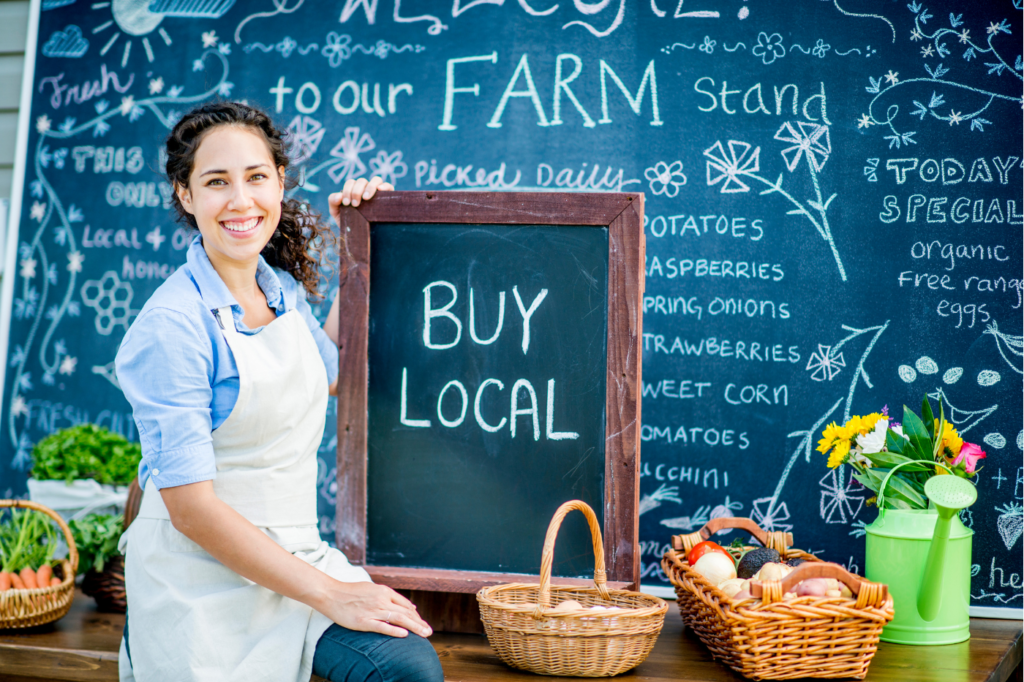
Let’s set the table with two contrasting meals:
Sustainable Feast:
Picture a delightful meal sourced from local farmers. The ingredients are seasonal, reducing the carbon footprint of transportation. The dishes are a colorful array of fruits, vegetables, and grains, showcasing the variety of goodness our planet provides. This meal is a hug to the earth and our health.
The Global Plate:
In stark contrast, imagine a meal made from ingredients that traveled across continents to reach your plate. The production process involved deforestation, and excessive water use, and contributed to greenhouse gas emissions. While the flavors might be diverse, the environmental cost is equally so.
What Does a Sustainable Diet Look Like?
Embracing sustainable living through delish dishes? Here’s how it’s served:
- Plant-Based Embrace:
- Emphasize a plant-based diet, rich in fruits, vegetables, legumes, and grains. It’s a compassionate choice that reduces the demand for animal agriculture.
- Local and Seasonal Love:
- Choose locally sourced, seasonal produce. It’s a nod to the rhythm of nature and supports local farmers.
- Mindful Consumption:
- Avoid excessive waste by portioning what you need and storing leftovers for later. It’s about appreciating the value of food.
- Water Consciousness:
- Be mindful of the water footprint of your food choices. Opt for low-impact foods that require less water to produce.
- Reduce Packaging Waste:
- Choose items with minimal or recyclable packaging. This small act significantly reduces waste.
A Sustainable Menu Example: 100% Taste 0% Food Waste!
Let’s create a delightful menu featuring the versatile beetroot, making the most of every part of it, drastically minimizing waste:
Breakfast: Beetroot Smoothie
- Ingredients:
- Beetroot (root and leaves), banana, apple, yogurt, and a splash of lemon juice.
Lunch: Beetroot Salad
- Ingredients:
- Roasted beetroot (root), mixed greens, quinoa, and a simple olive oil-lemon dressing.
Dinner: Beetroot Greens Stir Fry
- Ingredients:
- Beetroot leaves, garlic, ginger, soy sauce, and your favorite vegetables.
What to Do with Food Scraps and Leftovers:
- Beetroot Tops: Use in salads, sauté them, or blend into a pesto.
- Beetroot Peels: Dry and grind into a powder to add to soups or stews.
What Are the Key Benefits of a Sustainable Diet?
Let’s talk about the love story between a sustainable diet, our health and the planet’s well-being:
- Healthful Nourishment:
- A sustainable diet is loaded with nutritious, plant-based foods that support a healthier body and mind.
- Reduced Carbon Footprint:
- By choosing locally sourced, plant-based foods, we reduce the carbon footprint associated with food transportation and animal agriculture.
- Biodiversity Conservation:
- A sustainable diet promotes diverse crops, contributing to biodiversity and a healthier ecosystem.
- Preserving Water Resources:
- Plant-based diets generally require less water than diets heavy on animal products, thus helping to conserve this precious resource.
Bon Appétit to a world of sustainable flavors! Every meal we choose is an opportunity to nourish our bodies and the Earth. Let’s embrace sustainable living, one mindful bite at a time. 🌿🍽️
5. Participating in Ethical and Responsible Consumerism
Welcome to the world of conscious shopping and ethical choices! 🛒💚 Let’s embark on a journey where every purchase can be a step towards positive change for our planet and society.
Example No. 5

Let’s visualize two shopping sprees:
The Ethical Explorer:
Meet Emma, who carefully researches the companies she buys from. She chooses brands with fair labor practices, environmentally friendly manufacturing, and a commitment to social causes. Emma’s purchases reflect her values and contribute to a better world.
The Unconscious Shopper:
On the flip side, there’s Mark, who buys impulsively without considering the impact of his choices. He may unknowingly support companies that exploit workers or engage in harmful environmental practices. Mark’s purchases unintentionally contribute to a less-than-ideal world.
How Can Your Purchasing Choices Make a Positive Impact on the Environment and Society?
Every purchase you make is a powerful vote for the kind of world you want to live in. Here’s how your choices can echo positive change:
- Support Ethical Practices:
- Choose products made by companies that prioritize fair wages, safe working conditions, and ethical sourcing of materials.
- Opt for Sustainability:
- Look for environmentally friendly products, made from recycled materials, or have a lower environmental impact.
- Mindful Packaging:
- Choose products with minimal or biodegradable packaging to reduce waste and plastic pollution.
- Animal-Friendly Choices:
- Opt for products that are cruelty-free and not tested on animals, showing compassion towards all living beings.
- Local Love:
- Support local businesses and artisans. Buying locally reduces the carbon footprint associated with long-distance transportation.
Top 10 Brands for Ethical and Responsible Consumerism
Here are some exemplary brands that go the extra mile in aligning with ethical and responsible consumerism:
- Patagonia – Known for its environmental initiatives and fair labor practices.
- TOMS – Famous for its “One for One” policy, giving back for every purchase made.
- Eileen Fisher – Focuses on sustainable, eco-friendly fashion and ethical labor practices.
- Fairphone – Strives to create ethically sourced and environmentally responsible smartphones.
- Lush – Offers handmade, cruelty-free, and package-free beauty products.
- Warby Parker – Provides eyewear with a “Buy a Pair, Give a Pair” initiative and a focus on sustainability.
- Allbirds – Known for sustainable footwear made from natural materials.
- Ben & Jerry’s – Committed to sourcing fair trade ingredients and advocating for social causes.
- Numi Organic Tea – An organic and ethically sourced tea company with a focus on fair trade.
- REI – Promotes outdoor sustainability and responsible consumption through quality outdoor products.
Let your purchases speak volumes about the world you want to create! Every buying decision has the potential to create a ripple effect of positive change. Let’s make choices that resonate with our values and echo love and responsibility towards all. 💖🌿
FAQs: Everything You Wondered About Sustainable Living
Q1: What exactly is sustainable living?
Sustainable living involves making conscious choices to minimize our negative impact on the environment, society, and ourselves. It’s a lifestyle focused on preserving resources for future generations while prioritizing well-being and equity.
Q2: Is sustainable living all or nothing?
Not at all! Sustainable living is about progress, not perfection. Every small change you make contributes to a sustainable lifestyle. Start with what’s achievable for you and gradually build on that.
Q3: How can I afford sustainable living?
Sustainable living can be affordable. Start by being mindful of your consumption, reusing and repurposing items, buying second-hand, and making informed purchasing decisions. Over time, you’ll find it’s not only feasible but also cost-effective.
Q4: Can I make a difference as an individual?
Absolutely! Individual actions collectively create a massive impact. Your choices inspire others and contribute to a culture of sustainability. It’s about creating a ripple effect that can lead to significant positive changes.
Q5: What are some easy sustainable habits to start with?
Begin by reducing single-use plastics, saving energy at home, conserving water, and opting for public transportation or carpooling. These simple changes can have a profound impact.
Conclusion
Sustainable living is not just a choice; it’s a legacy we leave for generations to come.
Every small act of kindness to our planet, every mindful purchase, every effort to reduce waste—it all matters. Let’s be the change we wish to see, for a sustainable world begins with each one of us.
Start today, even if it’s with the tiniest of steps.
Embrace sustainable living and let it become a beautiful part of your everyday life. Together, we can make a world of difference, one thoughtful choice at a time. 🌱🌟



